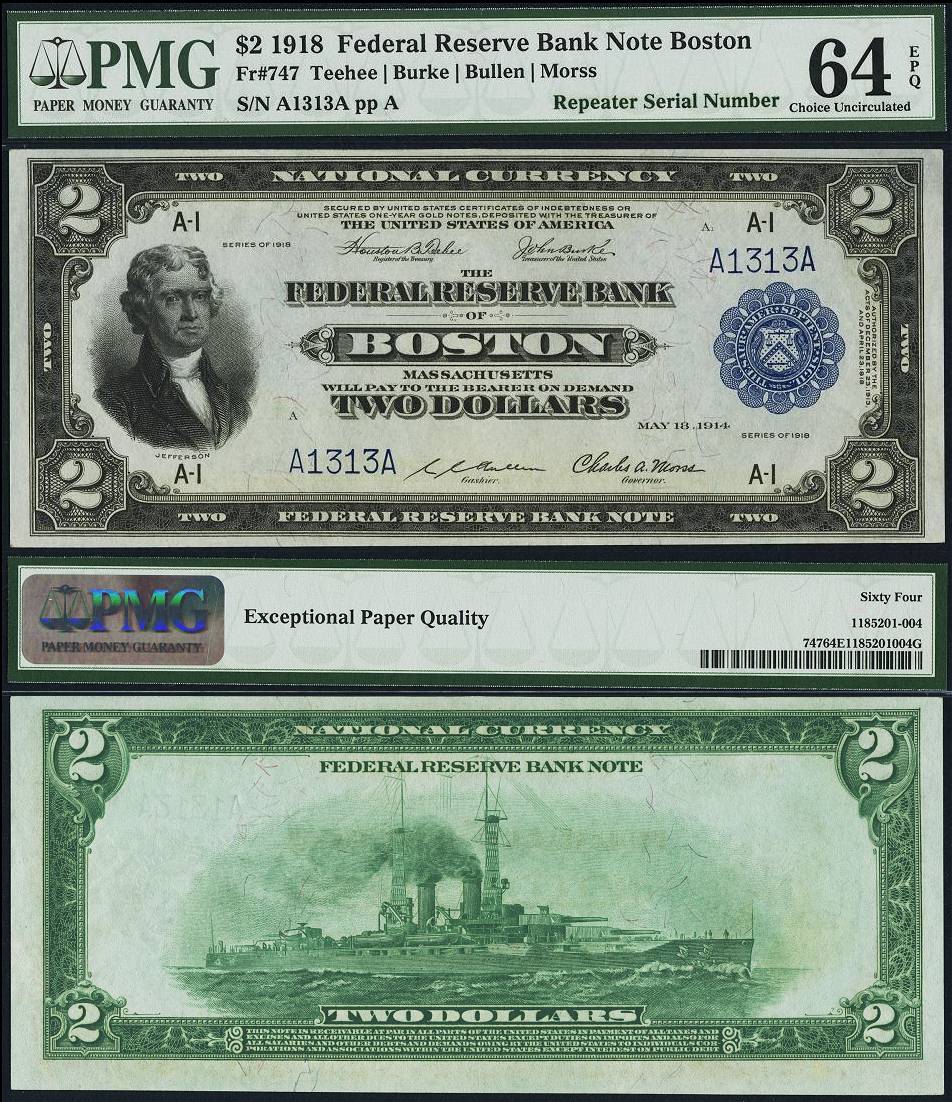


"FW" before the lower right plate number indicates note was printed at the Bureau of Engraving and Printing's satellite facility in Fort Worth, Texas.īelow is an example of a note without "FW" (printed at Washington, D.C.)
#Federal bank note series#
Notes printed at Fort Worth (since Series 1988A)
#Federal bank note serial number#
On the obverse side of the $1 banknote a letter in circle identifies the Federal Reserve bank branch, serial number of the note also starts with the same letter – Letters identifying FRB branches are as below. Great Seal of the United States around ONE.īureau of Engraving, Printing Signatures Kathryn O'Hay Granahan ( KOG)īureau of Engraving and Printing, United States (1862-date) Secretary's Signature and Treasury Seal at right.

The first paper money issued by the government were "demand notes" commonly referred to as "greenbacks." In 1862, Congress retired the demand notes and began issuing United States notes, also called legal tender notes.

With the onset of the Civil War, the government - desperate for money to finance the war - passed the Act of July 17, 1861, permitting the Treasury Department to print and circulate paper money. Eventually, 7,000 varieties of these "state bank notes" were put in circulation, each carrying a different design! In the interim years, however, the government did issue "Treasury notes" intermittently during periods of financial stress, such as the War of 1812, the Mexican War of 1846, and the Panic of 1857.ĭuring this same period (1793 - 1861), approximately 1,600 private banks were permitted to print and circulate their own paper currency under state charters. The government did not issue paper money until 1861. coins were struck in 1793 at the Philadelphia Mint and presented to Martha Washington. By this Act the U.S., became the first country in the world to adopt the decimal system for currency. Constitution was ratified, Congress passed the "Mint Act" of April 2, 1792, which established the coinage system of the United States and the dollar as the principal unit of currency. Image courtesy of United States Secret ServiceĪfter the U.S. (Series 1886 Martha Washington One Dollar Certificate - Martha Washington is the first and only woman to grace the primary portrait of U.S. The depreciation of this currency gave rise to the phrase "not worth a Continental." Paul Revere made the first plates for this "Continental Currency." Those notes were redeemable in Spanish Milled Dollars. However, in 1775, when the Revolutionary War became inevitable, the Continental Congress authorized the issuance of currency to finance the conflict. Early American colonists used English, Spanish and French money while they were under English rule.


 0 kommentar(er)
0 kommentar(er)
